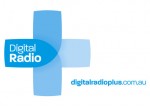Guest post: Digital radio has big potential for advertisers
Tomorrow sees Radio United, a five city outside broadcast featuring all commercial and public service broadcasters, to promote the launch of digital radio in Australia. In the guest posting, Commercial Radio Australia’s Joan Warner highlights its potential for advertisers and marketers.
What is digital radio? Put simply it’s all the stations you already know and love, plus new digital only stations such as Radar, Pink Radio, NovaNation, Koffee and The EDGE.
 It’s digital quality sound and interference free reception, the ability to tune to the station by name, rather than frequency, and on some radios, the ability to pause and rewind a few minutes if you missed a song you like.
It’s digital quality sound and interference free reception, the ability to tune to the station by name, rather than frequency, and on some radios, the ability to pause and rewind a few minutes if you missed a song you like.
Plus you get scrolling news, sport and weather text and on screen based receivers like the new iRiver B30 you’ll be able to see the CD cover of the song that’s playing, the station logo, product shots, possibly weather and traffic maps and photos of a the radio presenter or guest in studio.


Having seen the Radio National presenter shots on my iphone for podcasts, is it really a good idea to include presenter photos on digital radio? That’s why they are on radio not tv.
Digital media is measurable and targeted – this is neither.
Radio hasn’t gone digital, they’ve simply created more stations/channels and a little bit more content